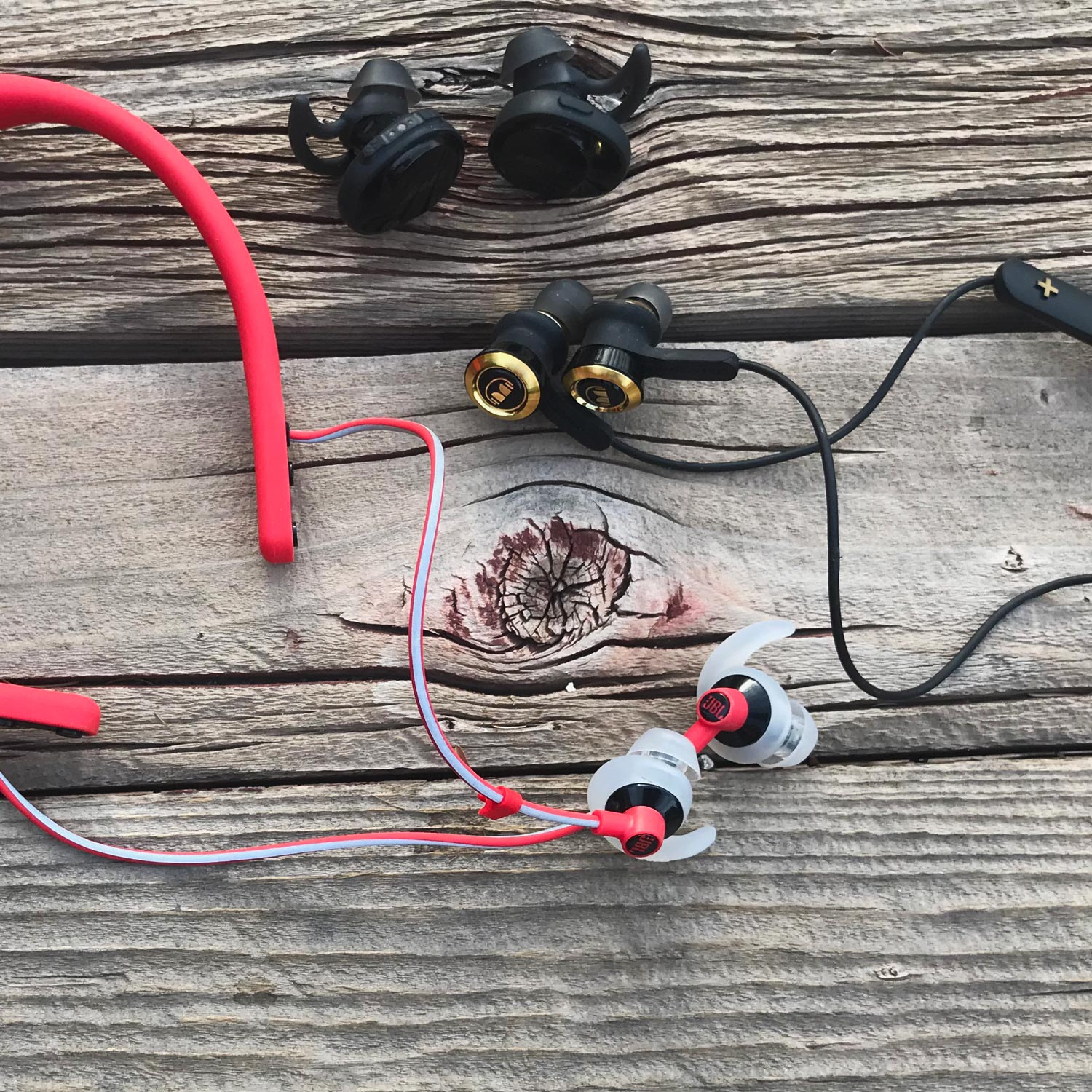We’re living in a golden age of earbuds and headphones. They sound better than ever, magically connect without wires, and keep getting smaller. In 2018, there’s a wider array of really good stuff on the market than I’ve ever seen. I’ve been amazed at how quickly “true wireless” earbuds—those with two individual unwired buds—have gone from wonky and frustrating to my favorite style of audio for working out. For this review, four testers and I took 30 pairs of earbuds and headphones on runs, rides, hikes, and gym workouts. The best of that crop was the , which blew us away with its power, clarity, and deceptively good fit. But it was a close race, and I’ve also written about several other earbuds and headphones that our team liked. For further information on our testing process and buying advice, scroll past our picks.
Our Pick: ��($250)
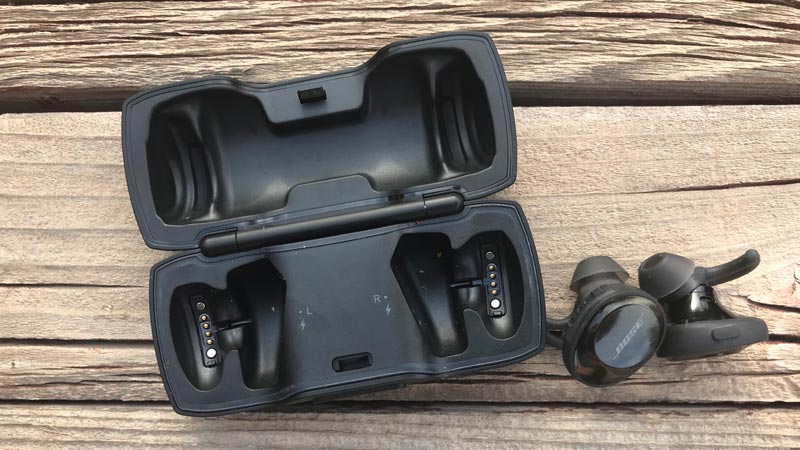
The ��was this year’s most pleasant surprise. Each earbud juts out somewhat far from the ear—one tester even called them clunky, and none of us thought they could possibly stay in place during workouts. I haven’t been the biggest fan of Bose earbuds in the past, and compared with models from Jaybird and Jabra, they didn’t look like they would hold up as well to heavy moisture.
But here’s the thing: These are the best earbuds we’ve ever heard. The sound is stunning. Deep, robust, crisp—as good as a very nice pair of headphones. If you like to crank the volume, they’ll play louder than any earbuds out there. We’ve taken them on dozens of runs in both dry and sweaty conditions, and the just-right rubber wedges that hold them in place have never budged.
Bose claims five hours of battery at medium-high volume, and the charging case holds two additional charges. (I didn’t rigorously test those estimates, but they seemed about right to me.) One tester had trouble pairing his phone the first time out, but in general, they were quick to connect and rarely ever dropped out. I wouldn’t stake my life on Bose’s claim that the SoundSport Free is water- and sweat-resistant, but through several sweaty workouts, they never presented any issues. Ultimately, my biggest hesitation here is the price: The Jaybird Run (below) costs $70 less and scored nearly as high in our test, although they don’t sound quite as exquisite.
Best for Runners: ($160)

Where the Bose SoundSport sounds mind-blowing, is merely outstanding. But if running is your focus and you’re concerned about rain, sweat, and dirt,��I think the Run is the best and best-sounding option on the market. Its battery life, at four hours, is shorter than the SoundSport, though again, the case holds two extra charges. One feature I especially liked is the Jaybird app, which lets you tweak the treble and bass or use presets to tailor the output to your purposes—one tester who has seen one too many bad apps found this one effective. It boosted “what needs boosting and only what needs boosting,” he said.
A knock against the Run: the button control on the side of the bud is hard to push, causing them to press uncomfortably into your ear. One user (with an Android phone) had a lot of trouble with pairing, though the rest of us were fine. Like the SoundSport, the Run is water-resistant, not waterproof, so don’t try swimming in these. (For actual submersion, the ($300) is your best option.) I also liked the Run’s closest competitor, the ($250), but that model is more expensive and didn’t sound as good. If you’re looking for a pair of earbuds to run in, I think the Run is the best and best-sounding option on the market.
Best All-Purpose Workout Buds: ($150)
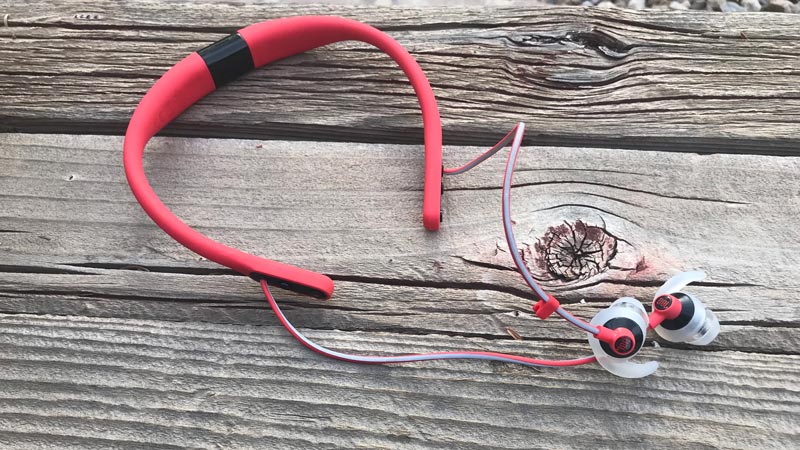
While true wireless is the technology of the moment, I have a hunch that some athletes will migrate back toward a middle ground, in the form of neckband-style earbuds. was the best-fitting of any earbuds in this test, a result of the neckband and secure rubber wings that helped wedge them in our ears. Even if, for example, you drop down to do pushups, the rubberized band hugs your neck and holds everything in place. “They stayed in place even during sit-ups and box jumps,” said one tester.
The Reflect Fit were also the best-sounding earbuds, aside from the Bose. (Audiophiles are spoiled this year.) This was the equipment I wanted for heart-pumping workout tunes played loud without distortion. The rubber collar adds more weight and doesn’t bend much, so tucking them in your pocket can be clunky. By the same token, the semirigid neckband, which also houses a mic for taking phone calls, adds durability. (Our runner-up in this category, the , at $170, has a bendy neckband that can practically fold into a ball.) The Reflect Fit holds a charge for ten hours and has a quick-charge function that provides one hour of use from 15 minutes of USB time.
Best Over-the-Ear Headphones: ��($180)
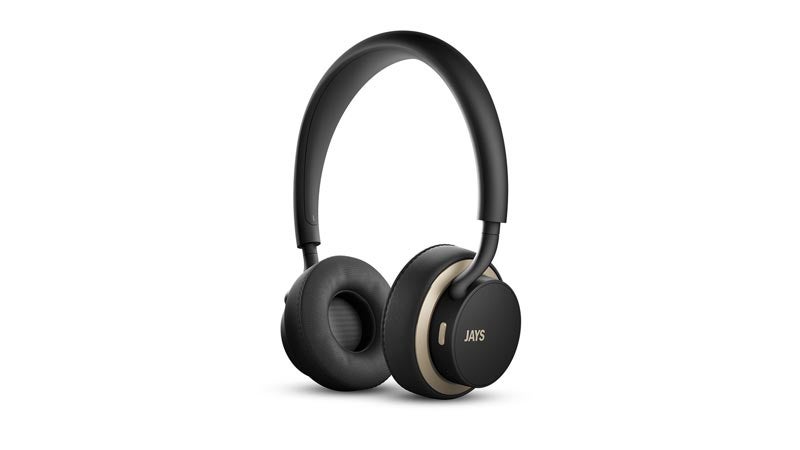
As the world goes wireless, prices for headphones and earbuds have trended upward. But Jays, based in Sweden, added Bluetooth connectivity to its excellent and then actually dropped the price. Which means for less than the cost of most earbuds out there, you can have a sweet pair of midsize headphones that, in my opinion, offer more versatility and user-friendliness than most earbuds—no time spent trying to wedge anything inside your ear, among other things.
I gravitated to the U-Jays for the clear, true, and not overly thumpy sound they produce. They’re also remarkably light for their power, at only eight ounces, and I even run in them when I want a day off from the invasive feeling of earbuds, though they’re meant for travel and everyday use. (With regular use for exercise, I suspect the foam pads would eventually suffer from all the sweat.) I had no issues with connectivity, they fit securely, and I liked the toned-down design that made me feel less like a teenager than I do when wearing a lot of headphones. Finally, there’s a touch control on the right earcup for volume, pausing, and skipping tracks, which makes them perfect for city use, where you often need to stop and listen to people and traffic. I loved this feature. (Turning it off is simple if you find yourself accidentally pausing your music.) The U-Jays Wireless plays for an impressive 25 hours on one charge.
Best Value: Monster ClarityHD High-Performance Wireless Earbuds ��($80)
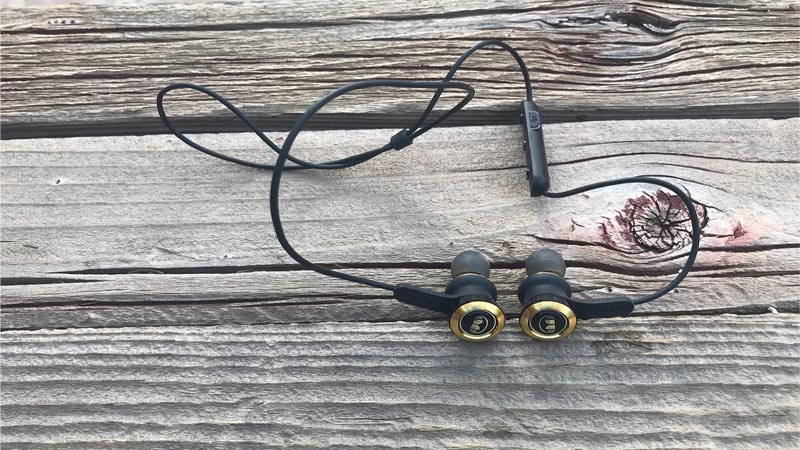
Like the Bose SoundSport, the ��looks a little chunky and unwieldy, but they also have an impressive amount of power and pump out a nicely layered, bass-heavy sound that the test team appreciated, whether going for a run or riding the train. They were roughly on a par with the JayBird Run, although one tester found the high notes to be too harsh. But “the simple design was really appealing,” said another, “and they easily paired with my phone.” They’re also much lighter than they appear.”The major ding against the ClarityHD is that they are prone to tugging, like all mostly wireless models, and they’re not stabilized by the rubber wings that Monster’s earlier sports models came with, so they fall out too often. They do have a cord keeper to cinch the cord against your neck, but the inline control inevitably drags on them. The only way I’ve successfully taken them running is by strapping my headband over my ears to hold them in place, which makes me look like a deranged Bjorn Borg. If you’re worried about that, you may want to confine them to general use. The key point here is that, in a field of dozens of brands making wireless earbuds, the ClarityHD was the best-sounding pair for less than $100. Like the Bose SoundSport, the ClarityHD��looks a little chunky and unwieldy, but they also have an impressive amount of power and pump out a nicely layered, bass-heavy sound that the test team appreciated, whether going for a run or riding the train. They were roughly on a par with the Jaybird Run, although one tester found the high notes to be too harsh. But “the simple design was really appealing,” said another, “and they easily paired with my phone.” They’re also much lighter than they appear.
5 More That Are Worth a Listen (Just Not Necessarily While Working Out)
The ($99) is a wired, over-ear studio-monitor-style headphone with impeccable sound for its price. I would use it for home listening, studio recording, and podcasting (but not exercise). ($150) sounds as good as most of the other wireless sports buds on this list, but the bulky��design turned some testers off.
For home use and low-impact listening around town, the ($450) are obviously a splurge, but they pay off in sound quality. That price also comes with a hefty old-school build. ($130) is a tough, foldable pair of wireless over-ear headphones (with a backup cable). A simple design belies its impressive audio chops. ($300) is designed for vloggers and anyone looking to capture 3D binaural audio to accompany action footage. It’s compatible with iOS devices.
What Should I Know Before Buying a Pair of Headphones or Earbuds?
All of our picks this year are wireless. This is not because the iPhone removed the headphone jack and left us with no other option; rather, it’s because we loved these units the most. Our testers were happy to be done with the incessant tugging of a cable hanging off our ears, with little penalty in sound quality. Wired headphones are still a bit easier to operate and don’t have batteries to charge. But for our more mobile purposes, we focused on the following categories.
True Wireless Earbuds
Also called “totally wireless,” these pair with your device, usually via a Bluetooth connection between your phone and one earbud, which then connects to the other earbud. There are no wires whatsoever and no controls dangling around and brushing your neck, they’re light, and as of this year, the best models offer superior sound. But connectivity is often less reliable (where only one ear works, for example), battery life is shorter, and there’s always a risk of losing one if you drop it on, say, a city street.
Mostly Wireless Earbuds
The most common type, these use a Bluetooth connection to your phone and connect the two ears by way of a wire. On average, these earbuds have better connectivity than true wireless models, they’re less expensive, and they’re easy to stuff in your pocket or backpack. They also tend to jiggle loose during workouts and don’t always sound great.
Neckband Wireless Earbuds
The same as “mostly wireless” but with a solid band that hugs your neck or sits at the base of your neck, which provides a stable platform that keeps the earbuds from shaking loose. They fit snugly (making them great for workouts), have better battery life, sound good, and make phone calls easy. But some people find that stiff band annoying, and they won’t stuff into a pocket.
Wireless Headphones
Some companies like to promote earbuds as “headphones,” but they’re not. Headphones have a band with an earcup on either end that sits over or on your ear. High-end headphones have been slower to switch to Bluetooth, but you’re likely to see wireless models these days, as in the ubiquitous (and very good) models. Plus, they usually come with a cord, which gives you both options. Wireless headphones are comfortable and powerful, sound great, and usually have much longer battery life. Those features also make them bigger and heavier and less well-suited to working out.
How We Tested Them
I spent four months sussing 30 different pairs, mostly by running the trails on the outskirts of Tucson and on hikes in the Santa Rita Mountains, south of town. My team tested about ten pairs each. In Santa Fe, Nathan took his earbuds trail running and mountain biking. Todd sweated through CrossFit-like workouts and trail runs in Livingston, Montana. Sean wore his road biking and working on his tennis serve in Northern California. Jeremy tested his buds hiking in Oregon’s Tualitin Mountains and (like me) did a lot of careful, side-by-side listening at home, in his case playing John Coltrane deep cuts from vinyl, and in my case trying to tell the difference between Joy Division on mp3 and flac.
In the interests of a level playing field, some of us took our wireless models out without first reading the instructions so we could determine how intuitive and simple their pairing method is and how easy it is to shut them down and start them up again. Extra points were given to the ones that didn’t require going back to the manual. Another way I tested for real-world use was by bringing a pocketful of models out each time, playing one song, disconnecting, pairing the next device, and playing that song again. This allowed me to see how reliable and fast the connection was and to get to know each track on��Quadrophenia like never before. (Keith Moon’s drum tantrums never get old.)
Those midrun swaps also allowed me to discover one other drawback to true wireless models: They easily slipped out of my fingers. But that, too, was part of the test: Earbuds got sweated on, drizzled on, dropped, yanked on, and stuffed into pockets, as per normal workout wear and tear. The good news here: Nothing in this year’s test ever failed.
To test battery life, I wore each pair at least six times over two weeks before going back to the charging station, though my test wasn’t meant to methodically check the advertised specs. Still, none of my choices ran out of juice, and the true wireless buds all come with a carrying case that holds a couple extra charges—which makes their shorter battery life somewhat less important. I got into the habit of dropping them into their cases when I got home, meaning they were always topped off.
Over the weeks, some pairs let us down because of their flimsy sound or poor fit, or because they were hard to pair, experienced frequent dropouts, or had other oddities, like a tendency to screech out feedback when the buds are in close proximity with each other. Our favorites didn’t give us connection headaches, had smart designs, and—the two most critical factors— sounded spectacular and didn’t jostle loose during a workout.


